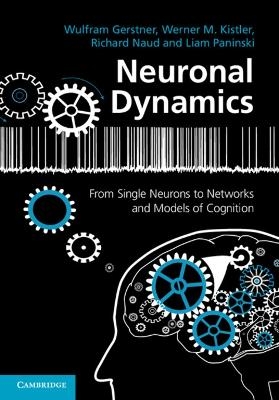
Neuronal Dynamics
Cambridge University Press (Verlag)
978-1-107-06083-8 (ISBN)
What happens in our brain when we make a decision? What triggers a neuron to send out a signal? What is the neural code? This textbook for advanced undergraduate and beginning graduate students provides a thorough and up-to-date introduction to the fields of computational and theoretical neuroscience. It covers classical topics, including the Hodgkin–Huxley equations and Hopfield model, as well as modern developments in the field such as generalized linear models and decision theory. Concepts are introduced using clear step-by-step explanations suitable for readers with only a basic knowledge of differential equations and probabilities, and are richly illustrated by figures and worked-out examples. End-of-chapter summaries and classroom-tested exercises make the book ideal for courses or for self-study. The authors also give pointers to the literature and an extensive bibliography, which will prove invaluable to readers interested in further study.
Wulfram Gerstner is Director of the Laboratory of Computational Neuroscience and a Professor of Life Sciences and Computer Science at the École Polytechnique Fédérale de Lausanne (EPFL) in Switzerland. He studied physics in Tubingen and Munich and holds a PhD from the Technical University of Munich. His research in computational neuroscience concentrates on models of spiking neurons and synaptic plasticity. He teaches computational neuroscience to physicists, computer scientists, mathematicians, and life scientists. He is a co-author of Spiking Neuron Models (Cambridge, 2002). Werner M. Kistler received a Master's and PhD in physics from the Technical University of Munich. He previously worked as Assistant Professor in Rotterdam for computational neuroscience and he is the co-author of Spiking Neuron Models (Cambridge, 2002). He is now working in Munich as a patent attorney. His scientific contributions are related to spiking neuron models, synaptic plasticity, and network models of the cerebellum and the inferior olive. Richard Naud holds a PhD in computational neuroscience from the EPFL in Switzerland and a Bachelor's degree in physics from McGill University, Canada. He has published several scientific articles and book chapters on the dynamics of neurons. He is now a postdoctoral researcher. Liam Paninski is a Professor in the Department of Statistics at Columbia University and co-director of the Grossman Center for the Statistics of Mind. He is also a member of the Center for Theoretical Neuroscience, the Kavli Institute for Brain Science and the doctoral program in neurobiology and behavior. He holds a PhD in neuroscience from New York University and a Bachelor's from Brown University. His work focuses on neuron models, estimation methods, neural coding and neural decoding. He teaches courses on computational statistics, inference, and statistical analysis of neural data.
Preface; Part I. Foundations of Neuronal Dynamics: 1. Introduction; 2. The Hodgkin–Huxley model; 3. Dendrites and synapses; 4. Dimensionality reduction and phase plane analysis; Part II. Generalized Integrate-and-Fire Neurons: 5. Nonlinear integrate-and-fire models; 6. Adaptation and firing patterns; 7. Variability of spike trains and neural codes; 8. Noisy input models: barrage of spike arrivals; 9. Noisy output: escape rate and soft threshold; 10. Estimating models; 11. Encoding and decoding with stochastic neuron models; Part III. Networks of Neurons and Population Activity: 12. Neuronal populations; 13. Continuity equation and the Fokker–Planck approach; 14. The integral-equation approach; 15. Fast transients and rate models; Part IV. Dynamics of Cognition: 16. Competing populations and decision making; 17. Memory and attractor dynamics; 18. Cortical field models for perception; 19. Synaptic plasticity and learning; 20. Outlook: dynamics in plastic networks; Bibliography; Index.
| Erscheint lt. Verlag | 24.7.2014 |
|---|---|
| Zusatzinfo | Worked examples or Exercises; 6 Tables, black and white; 70 Halftones, unspecified; 210 Line drawings, unspecified |
| Verlagsort | Cambridge |
| Sprache | englisch |
| Maße | 170 x 244 mm |
| Gewicht | 1130 g |
| Themenwelt | Informatik ► Datenbanken ► Data Warehouse / Data Mining |
| Informatik ► Theorie / Studium ► Künstliche Intelligenz / Robotik | |
| Medizin / Pharmazie ► Medizinische Fachgebiete ► Neurologie | |
| Naturwissenschaften ► Biologie ► Humanbiologie | |
| Naturwissenschaften ► Biologie ► Zoologie | |
| Naturwissenschaften ► Physik / Astronomie ► Angewandte Physik | |
| ISBN-10 | 1-107-06083-4 / 1107060834 |
| ISBN-13 | 978-1-107-06083-8 / 9781107060838 |
| Zustand | Neuware |
| Informationen gemäß Produktsicherheitsverordnung (GPSR) | |
| Haben Sie eine Frage zum Produkt? |
aus dem Bereich


